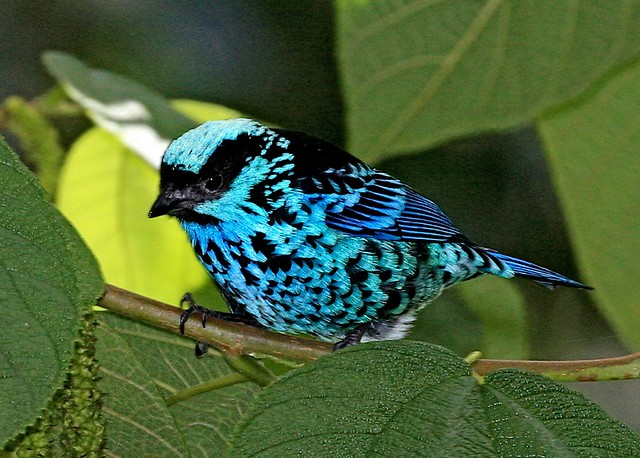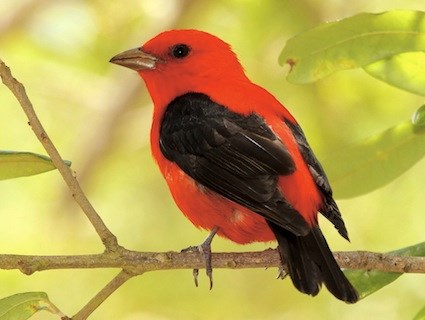Captain's log, Day 32: It is incredible to me that in meeting people also traveling in some of the world's most beautiful places, I have encountered so many people who are convinced that the destruction of said places is inevitable; that natural wonders should be admired quickly before they inevitably disappear. Luckily, the 252 new and 288 total bird species I have seen in only my first month here in Ecuador are equally incredible, and make taking up the flag for the opposition that much more meaningful. A previous professor told me recently that a passion for conservation is not just nostalgia for a world that can no longer be 'pristine' or an exercise in futility, but rather a moral inclination to fight for a world from which which we arose--a world that is filled with things that are essentially irreplaceable. Although many biologists and ecologists, myself included, rest relatively easy knowing that even if the world ceases to exist as we know it, it will start again when we're gone, it does not mean that we should give up on what millions of years have created in our speck of the universe. Hence, conservation.
Everyone is always throwing around that Margaret Mead quote about a small group of dedicated citizens being able to change the world. I am more inclined to stand with a man (whose name I've since forgotten) who gave a TED talk about "selling" societal change on social media: a small group of passionate citizens can change the world by spreading a revolutionary idea, and making it attractive to the rest of the world's citizens. Margaret Mead and mystery TED talk man from my Comparative Environmental Politics class aside, there's the ecologist message: that whatever ideas spread in whatever places around the world, the complex solutions for balancing human (animal), animal, and plant needs and resources for sustainable living will be different in each part of this grand world, and we're going to need a lot of small groups of dedicated citizens with big ideas if we're going to hold on to what we've got now.
I think I mentioned in my last post that I walked for three hours in Yasunì National Park, and could always hear the oil or military helicopters or boats through the seemingly impenetrable forest cover. In spite of all of that, we saw -Jaguar- prints, the Variegated Tinamou, and the retreating back of a Gray-winged Trumpeter, among countless other bird, mammal, reptile, amphibian, and plant species. Similarly, the 19 species of hummingbird, 15 species of flycatcher, three trogons, two toucans, lek of Andean Cock-of-the-Rocks...ALL the bird species I saw in Mindo are still only starting to feel the real squeeze of development (habitat loss) and climate change. There are biologists there working to monitor how these species are using their environments differently with the changes. These small groups, often well-known and lauded in their communities, really DO make huge conservation differences. Sadly, they are not everywhere. Sadder is the lack of environmental education in so many of these places with incredible biodiversity. Incredible are those organizations that do have conservation education, captive breeding for wild release programs, wildlife rescue operations, and biodiversity survey efforts. When people really learn about the world around them, they are more likely to really love the world around them. I most certainly have a deeper appreciation for it after working for places like the Oakland Zoo, the National Aviary, and now--Bioparque Amaru Zoo in Cuenca, Ecuador and in the future with Ornithologist Dr.Dusti Becker and her banding efforts at the private Reserva de Las Tangaras in Mindo, Ecuador.
What a rush it is to see these birds I've only seen in rescues, conservation-minded zoos, and in the Pennsylvanian suburbs in the wilds of South America.
I think I mentioned in my last post that I walked for three hours in Yasunì National Park, and could always hear the oil or military helicopters or boats through the seemingly impenetrable forest cover. In spite of all of that, we saw -Jaguar- prints, the Variegated Tinamou, and the retreating back of a Gray-winged Trumpeter, among countless other bird, mammal, reptile, amphibian, and plant species. Similarly, the 19 species of hummingbird, 15 species of flycatcher, three trogons, two toucans, lek of Andean Cock-of-the-Rocks...ALL the bird species I saw in Mindo are still only starting to feel the real squeeze of development (habitat loss) and climate change. There are biologists there working to monitor how these species are using their environments differently with the changes. These small groups, often well-known and lauded in their communities, really DO make huge conservation differences. Sadly, they are not everywhere. Sadder is the lack of environmental education in so many of these places with incredible biodiversity. Incredible are those organizations that do have conservation education, captive breeding for wild release programs, wildlife rescue operations, and biodiversity survey efforts. When people really learn about the world around them, they are more likely to really love the world around them. I most certainly have a deeper appreciation for it after working for places like the Oakland Zoo, the National Aviary, and now--Bioparque Amaru Zoo in Cuenca, Ecuador and in the future with Ornithologist Dr.Dusti Becker and her banding efforts at the private Reserva de Las Tangaras in Mindo, Ecuador.
What a rush it is to see these birds I've only seen in rescues, conservation-minded zoos, and in the Pennsylvanian suburbs in the wilds of South America.
 |
| Like the National Aviary's Gray-Winged Trumpeter in Yasunì National Park. |
 |
| Or the Aviary's Spangled Cotinga in trails off of lowland black lagoons with Yarina Ecolodge. |
 |
| American Redstarts: migrants to Ecuador and northwest South America from the United States. |
 |
| To be able to identify the Screaming Piha's call through the forest from so many mornings in the National Aviary's wetlands exhibit. |
 |
| ...or the Spectacled Owl, also from the Aviary's wetlands. |
 |
| What more of all the Tanagers in the cloud forests of Mindo? How many more Tanager Reserves run by passionate ornithologists will it take to keep them around? |
 |
| How could people say that the cause to save tropical ecosystems is futile if they -knew- how connected their own health and existence is to the health of the natural world? What if they all knew about ecosystem services, or how the tropics contribute to global weather patterns? What if they loved the fact that people in the Ecuadorian Andes call Scarlet Tanagers "Withches of Summer" for their red garb and black "capes"; what if they knew how far these birds traveled from the US to get to their wintering grounds in dry-season Ecuador, and thought about all the ecosystems these birds depend on during that journey? How their journeys depend on so many ecosystems as well? |
I may be all about the birds, but the ecosystems and the world are what I'm trying to think about. The balance of man and (the rest of) nature is so VIVID here in Ecuador, where the country is developing, and small groups of citizens are fighting lacking resources with passion and ingenuity that far surpasses anything I've yet seen in my education. I have to leave my internet cafe now and get ready for work at the Amaru Zoo tomorrow, but I will be posting more about the incredible conservation efforts of Ecuadorian conservation organizations in the three posts I have in the works.
Until then, check out Las Tangaras and Bioparque Amaru online:
http://lastangaras.wordpress.com/
http://zoologicodecuenca.com/
And hasta luego, all.
-Nikki
Until then, check out Las Tangaras and Bioparque Amaru online:
http://lastangaras.wordpress.com/
http://zoologicodecuenca.com/
And hasta luego, all.
-Nikki
No comments:
Post a Comment